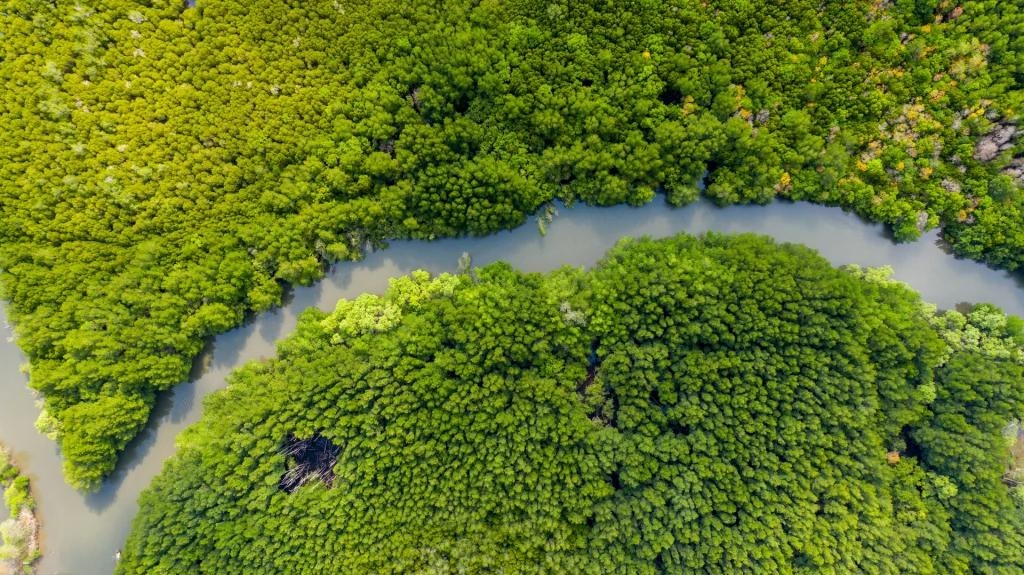Reviewed by Danielle Ellis, B.Sc.May 8 2023
Investigators from Brazil reveal that Amazonian dark earth (ADE), soils enriched by Amerindian people thousands of years ago, enhances the establishment and growth of seedlings of tree species vital for reforestation. Reforestation in Brazil and elsewhere could be accelerated by mimicking the composition of ADE, particularly its microorganisms.

Image Credit: Frontiers
Millions of Amerindians living in today's Amazonia altered the formerly poor soil through numerous mechanisms between around 450 BCE and 950 CE. Soils were enhanced with charcoal from low-intensity fires used for cooking and burning refuse, animal bones, broken pottery, compost, and manure over many human generations.
The end product is Amazonian dark earth (ADE) or terra preta, which is highly fertile due to its high nutritional content and stable organic matter formed from charcoal, which gives it its black color.
Researchers from Brazil have now demonstrated that ADE could be a “secret weapon” to enhance reforestation not only in the Amazon, where 18% or around 780,000 km2 has been destroyed since the 1970s but globally. The findings have been reported in Frontiers in Soil Science.
Here we show that the use of ADEs can enhance the growth of pasture and trees due to their high levels of nutrients, as well as to the presence of beneficial bacteria and archaea in the soil microbial community. This means that knowledge of the ‘ingredients’ that make ADEs so very fertile could be applied to help speed up ecological restoration projects.”
Luís Felipe Zagatto, Study Joint Lead Author and Graduate Student, Center for Nuclear Energy in Agriculture, São Paulo University
Mimicking Reforestation in Miniature
The researchers carried out controlled studies to simulate the ecological succession and soil changes that occur when pasture in deforested areas is actively converted to forest. Their goal was to investigate if ADEs, or eventually soils in which the microbiome has been artificially built to mimic them, may speed up this process.
Zagatto and co-workers collected samples of ADE from the Caldeirão Experimental Research Station in the Brazilian state of Amazonas. They used agricultural soil from the Luiz de Queiróz Superior School of Agriculture in the state of São Paulo as a control. They filled 36 four-liter pots with 3 kg soil inside a greenhouse with a mean temperature of 34 ºC to predict global warming beyond present Amazonian temperatures of 22 to 28 ºC.
One-third of the pots obtained only control soil, another third received a 4:1 blend of control soil and ADE, and the remaining third received 100% ADE. They put seeds of palisade grass (Urochloa brizantha), a typical fodder for animals in Brazil, in each container to mimic pasture and allowed the seedlings to develop for 60 days.
Researchers then cut the grass and let only its roots persist in the soil—virgin territory for reforestation in miniature. The researchers then transplanted each of the three soils with tree seeds, either from the colonizing species Ambay pumpwood (Cecropia pachystachya), Peltophorum dubium from secondary forests, or Cedro blanco (Cedrela fissilis) from climax forest.
The seeds were permitted to germinate and the seedlings to grow for 90 days before measuring the height, dry mass, and root extension. Over the course of the experiment, the scientists measured changes in the pH, texture, and concentrations of organic matter, calcium, magnesium, potassium, sulfur, aluminum, copper, boron, iron, and zinc in the soil. They also evaluated changes in microbial diversity in the soil using molecular techniques.
Rich in Nutrients and Beneficial Microbes
Initially, ADEs contained more nutrients than control soil, including 30 times more phosphorus and three to five times more of all other tested nutrients except manganese. The pH of ADE was likewise higher, and it contained more sand and silt but less clay. Soils contained fewer nutrients after the trial, reflecting plant take-up, but 100% ADE soils remained richer in these than control soils, while nutrient levels in 20% ADE soils were intermediate.
Throughout the study, soils with 20% or 100% ADE supported a larger diversity of bacteria and archaea than control soils.
Microbes transform chemical soil particles into nutrients that can be taken up by plants. Our data showed that ADE contains microorganisms that are better at this transformation of soils, thus providing more resources for plant development. For example, ADE soils contained more beneficial taxa of the bacterial families Paenibacillaceae, Planococcaceae, Micromonosporaceae, and Hyphomicroblaceae.”
Anderson Santos de Freitas, Study Joint Lead Author, São Paulo University
Growth Boosted
The results also revealed that adding ADE to soil increased plant growth and development. The dry mass of palisade grass, for example, increased 3.4 times in 20% ADE and 8.1 times in 100% ADE when compared to control soil.
ADE significantly increased the growth of the three tree species: seedlings of cedro blanco and P. dubium were 2.1 and 5.2 times taller in 20% ADE, and 3.2 and 6.3 times taller in 100% ADE, respectively, compared to control soils. Ambay pumpwood did not grow in control soils or 20% ADE, but thrived in 100% ADE.
The researchers came to the conclusion that ADE can increase plant growth.
“Our data point to a mixture of soil nutrients and adapted microorganisms [in ADE] to improve the establishment of plant trees in restoration,” they commented.
Senior author Dr Siu Mui Tsai, a Professor at the same institute, cautions, “ADE has taken thousands of years to accumulate and would take an equal time to regenerate in nature if used. Our recommendations aren’t to utilize ADE itself, but rather to copy its characteristics, particularly its microorganisms, for use in future ecological restoration projects.”
Source:
Journal reference:
de Freitas, A. S., et al. (2023). Amazonian Dark Earths Enhance the Establishment of Tree Species in Forest Ecological Restoration. Frontiers in Soil Science doi.org/10.3389/fsoil.2023.1161627.